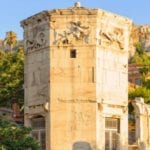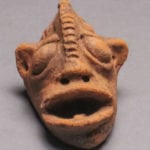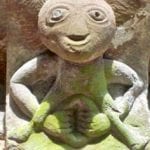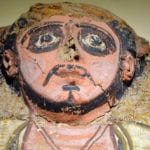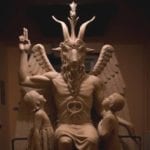 Movies and TV
Movies and TV  Movies and TV
Movies and TV  History
History 10 Things You Never Knew About Presidential First Ladies
 Movies and TV
Movies and TV 10 Zombie Movies That Will Actually Terrify You
 Humans
Humans 10 Times Scientists Were Absolutely Sure… and Absolutely Wrong
 Our World
Our World 10 Pivotal Moments for Life on Earth
 Movies and TV
Movies and TV 10 Most Realistic Medical TV Shows of All Time
 Creepy
Creepy 10 Eerie & Mysterious Ghosts of the Pacific Coast
 Weird Stuff
Weird Stuff 10 Typos That Accidentally Changed History
 History
History 10 Times Trickery Won Battles
 Technology
Technology 10 Awesome Upgrades to Common Household Items
 Movies and TV
Movies and TV 10 Movie Flops That Found Their Way to Cult Classic Status
 History
History 10 Things You Never Knew About Presidential First Ladies
 Movies and TV
Movies and TV 10 Zombie Movies That Will Actually Terrify You
Who's Behind Listverse?

Jamie Frater
Head Editor
Jamie founded Listverse due to an insatiable desire to share fascinating, obscure, and bizarre facts. He has been a guest speaker on numerous national radio and television stations and is a five time published author.
More About Us Humans
Humans 10 Times Scientists Were Absolutely Sure… and Absolutely Wrong
 Our World
Our World 10 Pivotal Moments for Life on Earth
 Movies and TV
Movies and TV 10 Most Realistic Medical TV Shows of All Time
 Creepy
Creepy 10 Eerie & Mysterious Ghosts of the Pacific Coast
 Weird Stuff
Weird Stuff 10 Typos That Accidentally Changed History
 History
History 10 Times Trickery Won Battles
 Technology
Technology 10 Awesome Upgrades to Common Household Items
10 Breathtaking Examples Of Ancient Temple Art
For countless people, there is nothing left of them after they pass on. Those who know them die and their memories fade. However, the art of ancient temples around the world preserves more than just the memories of souls whom the world has all but forgotten. The artwork is an invaluable look into their lives, their talents, and—perhaps most importantly—their beliefs. These beliefs were strong enough that they were recorded in breathtaking artwork and preserved for centuries.
10Rani-Ki-Vav
India

The stepwells of India are both hugely practical and amazingly beautiful. Some of these are in elegant temples that honor one of the most sacred substances on Earth—water.
Originally, these stepwells were utilitarian. Wells were dug down to the water table allowing access to water even in the long and dry summer months. Eventually, many of the stepwells were constructed not only as water sources but also as temples and memorials that honored the rain-giving deities.
In the 1950s, Rani-ki-Vav, a stepwell near Patan, Gukarat, was rediscovered after spending centuries abandoned and filled with mud, sand, and silt. As the stepwell filled, it covered the exquisite carvings that had been a monumental part of the temple and preserved them from the elements. The riverbed that originally supplied the stepwell continued to shift and today it’s non-functional as a well but provides a breathtaking example of early art and architecture.
Recently named a World Heritage Site, Rani-ki-Vav—also known as the Queen’s Stepwell—was built sometime between 1022 and 1063 by Queen Udayamati as a memorial to her late husband, Bhimdev I. The design is a fascinating one; it was built not only as a memorial but also to honor the life-giving water. As such, it’s essentially a temple built upside-down. Seven levels of stairs lead down to the water ultimately leading down to a well that’s about 30 meters (98 ft) deep.
Throughout the temple, there are more than 500 major sculptures and more than 1,000 smaller ones. Countless frescoes adorn the walls with many reinforcing the precious nature of water in a land that had little. Many more are religious in nature and depict deities from religion, mythology, and folklore, telling stories and showing key moments from famous tales. There are also references to literary works that would have been contemporary works when the temple was built. It served as an elegant memorial, beautiful temple, and place for social gatherings.
9Kakadu National Park
Australia

While it’s not a traditional temple, the rock caves and murals of Kakadu National Park have an undeniable religious significance that began thousands of years ago. It’s been estimated that the caves were occupied as far back as 50,000 years ago, and some of the paintings that can still be seen today are 20,000 years old.
According to the beliefs of the Bininj, the earliest rock paintings were done by the Mimi spirit people. The ancient people used the cave paintings to teach ancient Aboriginal people how their culture should be established and structured, what laws they should follow, and what activities would sustain them. All Bininj art was thought to be learned by copying the earliest of the spirit art, allowing them to pass down religious traditions and images through the centuries.
Some of the caves were sacred places that were only accessible to the most senior men and women of the group. Sacred not just because of what was painted on the walls, but because some of the caves were also considered dangerous. They were created by the same creators that had made man, and they were djang—or dreaming places. Some of the knowledge passed on through the cave paintings were public stories often about hunting or activities that everyone did. Other knowledge was only passed on with a person’s progression through their spiritual and ceremonial life. As a person took on new responsibilities they gained new knowledge that could even include sorcery and magical spells.
8The Buddhist Vihara At Paharpur
Bangladesh
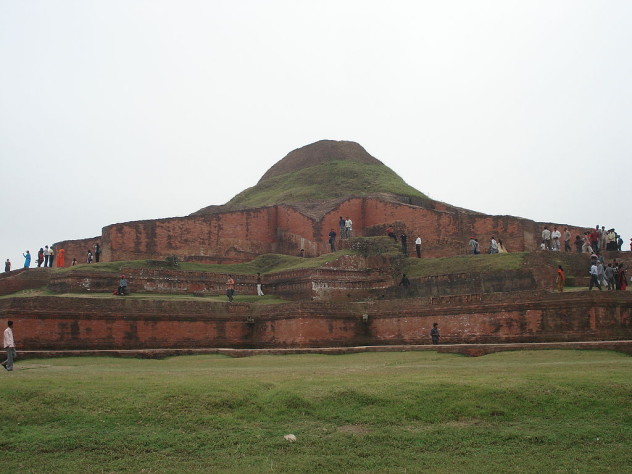
The Buddhist monastery sits in the northwest corner of Bangladesh and, as it sits today, it’s the product of several different stages of construction. It was originally built during the reign of Dharmapala Vikramshila between 770 and 810. The central worshiping area is a terraced shrine with an upper level that contains several chapels. Around the outside of the main shrine are 177 individual cells that were constructed as a later addition to the monastery. More than 60 stone sculptures adorn the base of the central shrine—each one represents one of the Hindu divinities.
In addition to the pottery and sculptures that have been salvaged from the temple and brought to a museum, there are also the terra-cotta frescoes. More than 2,800 individual plaques adorn the oldest part of the temple depicting a wide range of scenes from religious, military, and economic life. The bottom terraces of the central shrine are also exquisitely decorated with some of the most familiar of Buddhist icons from petal icons to pyramidal shapes. Many of the scenes tell the story of the life and evolution of the treatises of Mahayana Buddhism that were created and recorded at the temple.
Sadly, many of the terra-cotta plaques are starting to deteriorate because of the wear and tear from their environment. In some places, there are major sections of plaques missing but, as a World Heritage site, preservation efforts will be made.
7Virupaksha Temple
India
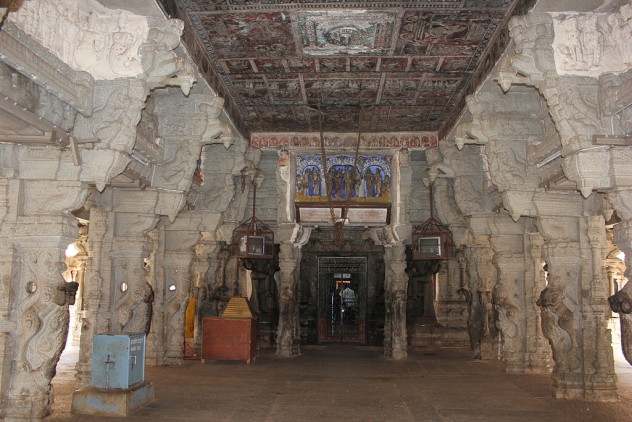
Built sometime around 740 to commemorate a military victory, the temple originally contained 32 small shrines to individual Hindu deities. Only a few still remain along with small shrines to Mahishamardini and Ganesa; other parts of the temple house small niches with ornate carvings depicting different deities. The entirety of the temple’s interior is covered with carvings of various scenes and motifs vital to the foundation of the religion. Even the temple’s pillars are adorned with scenes like Krishna lifting a mountain. Where there isn’t room for full scenes there are intricate motifs like human faces, animals, and birds.
The art of the temple has only recently started releasing some of its secrets. University of Alabama scholars have been taking a slightly different look at the intricate carvings of the temple, and they’ve found that it’s sharing a lot that’s been previously unknown about the ancient culture. In addition to revealing something of a hierarchy among the deities, the carvings also show the glorification of the king and, perhaps more surprisingly, the status that his primary queen enjoyed. She’s often shown first and foremost within the women of the king’s inner circle, and other depictions of women suggest that they had more power in social and economic matter than first thought. They were among the most important of the temple’s patrons, and it’s now thought that they controlled much of the wealth and resources that were involved with the temple.
6Tsodilo
Botswana
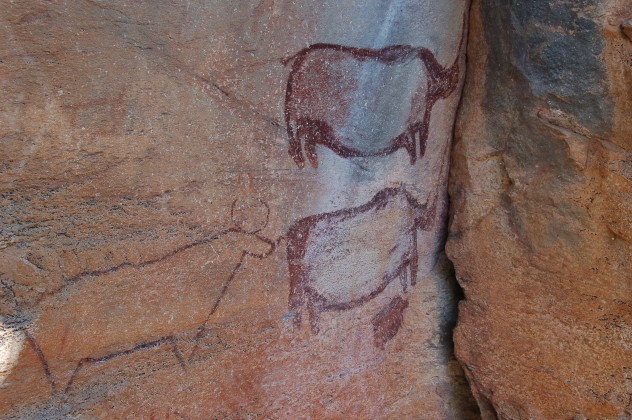
According to the mythology of the people who live there, the Tsodilo Hills were the cradle of creation. Hambukushu legend says that the four major mountains are Male Hill, Female Hill, Child Hill, and Grandchild Hill. The hills are the source of all life, contain the eternal water spring, and are also the home of the spirits of all living beings. Etched permanently into the rock of the Rhino Trail and snaking across the surface of the Female Hill are markings that are said to belong to the very first animals that ever walked the Earth.
Not surprisingly, this has cemented the hills’ role as a spiritual place—another non-traditional temple. Pilgrims, including local ones and those from other countries and religions, come to take sacred water from the eternal spring, reveling in its ritual cleansing properties. And, while they’re there they also see the rock art.
Most of the art is on the rocks of the Male, Female, and Child Hills. There are more than 4,000 paintings. Some depict humans, wild animals, domestic animals, and series of shapes and patterns. They’ve been estimated to be anywhere from a few hundred to a few thousand years old, depending on the area. They have been a place of shelter and sanctity for at least 100,000 years.
Many of the paintings are mysterious, and it is difficult to decipher the meanings or symbols. Most have been attributed to the San people who pre-date those who occupy the area now. The hills were a place for dances and ceremonies, asking their creators for assistance and life-giving rain, and just for living life. A testament to just how sacred a place the hills are, they contain the only such rock paintings for miles and miles—the next nearest site is 250 kilometers (150 mi) away.
5The Island Of Reichnau
Germany
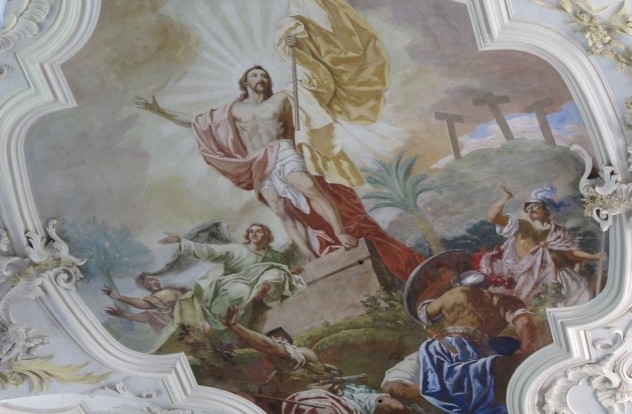
Sitting on a small island in the northern part of Germany’s Lake Constance is an abbey that was founded all the way back in 724. The first Abbot was in charge of building a monastery to honor Saint Peter, Saint Paul, and the Virgin Mary and, according to the story, he had the support of Charles Martel, the grandfather of Charlemagne. What started out as a small wooden building became bigger and bigger and bigger, helped in part by its ideal location as a jumping-off point for travelers going between Italy and Germany.
In 896, Abbot Heito III returned to Germany after a trip to Rome. He brought with him one of the holiest of holy relics—the head of Saint George. Needing to build a church to honor the relic, he built the Church of Saint George at Oberzell. Throughout its first two centuries, the church had a couple of overhauls and additions including the installation of wall paintings between the 10th and 11th centuries.
These wall paintings are now some of the only remaining examples we have of church art from the period. The works are fading with age but surprisingly well-preserved and include eight scenes of Christ healing the sick, along with smaller pieces illustrating famous moments from the Bible—the curing of the man blind from birth, the return of Lazarus, and other scenes of healing. The presence of the beautiful artwork isn’t entirely surprising as it dates from around the same era as the monastery which was used in part as a school for teaching the art of manuscript illustrations.
4The Sun Temple
India
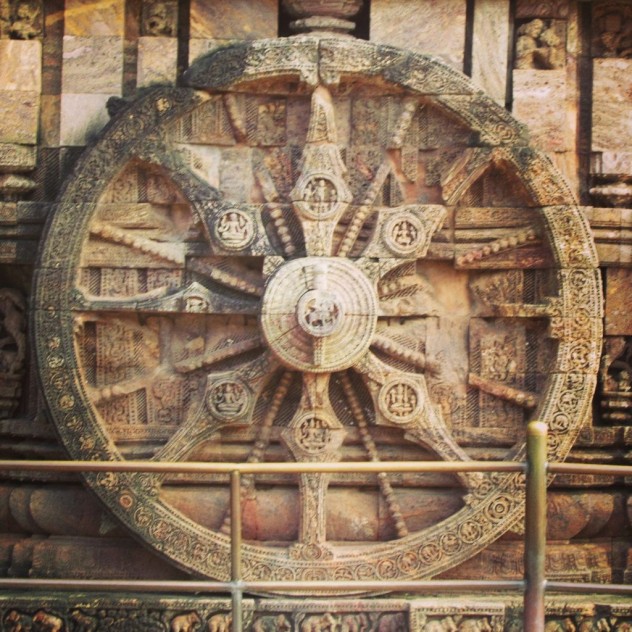
It’s so amazingly intricately built and designed that it’s said it took the labor of 1,200 artisans and 12 years to complete the temple that stands to the cult of Surya, the Sun God. It was built around 1250, and one of the legends surrounding its construction is that it was built by Samba, the son of Lord Krishna. Samba had contracted leprosy and, after performing 12 years of penance, he was deemed worthy and was cured by the Sun God Surya. As thanks he built the temple in his honor.
It was supposedly the work of one master builder named Bisu Moharana who left home to oversee and complete the project. Eventually, he was joined by his son who designed the temple’s cupola. However, his father was unable to finish building it as it was designed and, as his punishment, the son killed himself.
The entire thing was created to represent an earthly version of the Sun God’s chariot; across the north and south sides of the temple are 24 chariot wheels carved into relief. There were once seven horses in place to pull the chariot—only six remain now. The body of the temple itself is decorated in a series of reliefs that tell the stories of the seasons, show the passing of the months, and tell the legends of the Sun God. Others show fantastical animals and creatures, exotic dancers, musicians, and rather erotic couplings. The layout of the frescoes tells the story not only of myths and legends but of the tantric practices of Brahmanismand beliefs. Life-size female stone sculptures stand watch over the central shrine while two other smaller temples stand outside the main complex.
3Urnes Stave Church
Norway
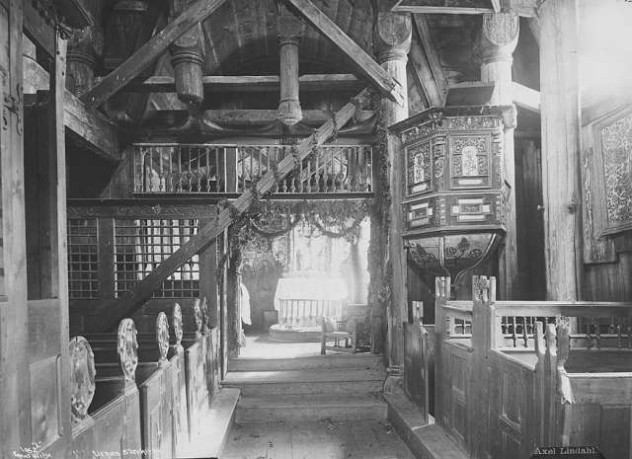
Stave churches were once seen across northwestern Europe, but now only a handful remain. Urnes Stave Church, built in the 1100s and sitting on the western coast of Norway, is one of the oldest and best preserved examples of these massive wooden basilicas. Stave churches are built with all the elements of Romanesque architecture—massive columns, impressive arches, and intricate carvings. The difference is that the stave church is made entirely of wood which makes it particularly vulnerable to the elements and the wear and tear of time.
The church is decorated with a series of intricate wooden carvings; many show animals interlaced in an abstract knot work pattern that bring together Viking tradition and Celtic artwork with the relative newcomer to the area—Christianity. The church was built only a handful of decades after Christianity was introduced to Norway between 1016 and 1030. The earliest pieces of the church were from trees felled in 1100. There have been a number of remodels and restorations done to the building over the years, but much of the artwork—like the carved wooden panels—has been preserved.
On the inside, there are a number of paintings from a renovation that took place in 1601 when the interior of the building was modified and the choir extended. The church is still in occasional use and many of the items used date back to the Middle Ages, including a sculpted wooden pulpit and images of Christ, the Virgin Mary, and Saint John carved into a rood beam.
2Early Christian Necropolis Of Pecs (Sopianae)
Hungary
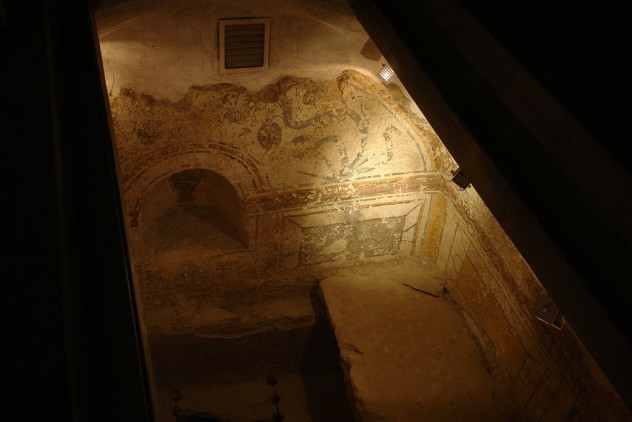
Christianity was spreading by the fourth century and in the Roman city of Sopianae, now known as Pecs, the worshipers of the burgeoning religion constructed a series of breathtakingly beautiful—and rather ingenious—tombs. This all happened during a period of history when Roman rule was falling and everything was up for grabs. Perhaps most impressive of all is the survival of the 16 buildings that make up the site. While many Christian buildings and monuments were destroyed during the 16th-century takeover by Turkish Muslims, the necropolis—and its artwork—still remain.
Above ground are memorials and chapels while the burial sites and tombs are underground. Many of the ancient frescoes in the tombs and mausoleums have been incredibly well preserved—a testament to the determination of early Christians that has lasted through the centuries. Among the most ornate is the Peter and Paul Tomb, which is decorated not only with scenes depicting the two saints, but also with images of some of the Bible’s most famous stories—Adam and Eve, Noah and the flood, and Jonah and the whale. There are also a series of familiar Christian motifs that have remained unchanged over the centuries, such as the dove. Another known as the Jug Tomb was given its name because of the fresco that depicts a cup and a jug to represent the Holy Sacrament.
Most of the people who were laid to rest at the site were given burial places in tombs; there are some that have been buried in graves within the chambers beneath the buildings, however, and about 500 graves have been found around the monuments themselves.
1Benedictine Convent Of Saint John At Mustair
Switzerland
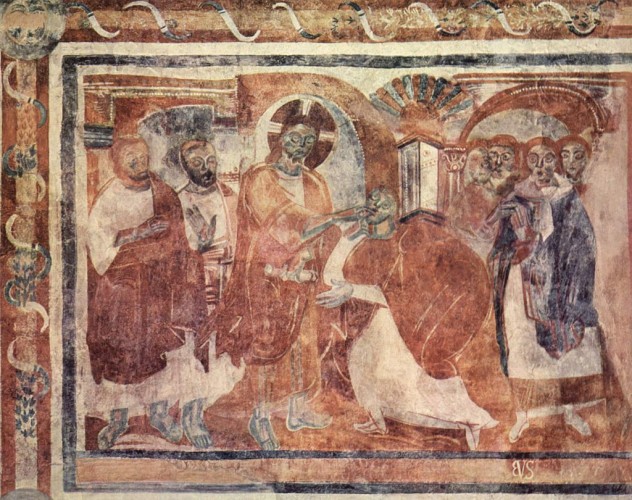
The Benedictine Convent of Saint John at Mustair was built around 800 and sits in one of Switzerland’s seemingly infinite picturesque valleys. It was founded at the request of Charlemagne and passed to the Benedictines at the beginning of the ninth century, becoming a convent in 1163.
It’s also the site of some of the only artwork we have from the Carolingian period. The paintings were originally created when the site was built, and they were painted over in a remodel that was done around 1200. It was only relatively recently that newer additions to the building—like the Gothic ceiling and the tragically whitewashed walls—were removed to reveal the series of frescoes underneath.
The site, which had been built to honor Saint John the Baptist, had been painted with a series of scenes that told the story of Christ. Their discovery also helped to fill in some gaps in the history of the evolution of Christian themes and symbols. With Carolingian artwork sorely lacking, the discovery of the severely damaged paintings helped art and religious historians understand how key moments in Christian lore—like the Last Judgment—had evolved.
In addition to the paintings, there are other pieces that would have been installed only a few centuries after the construction of the building and are no less important, such as the statue of Charlemagne dating to 1165 and a relief that shows the Baptism of Christ, slightly older and dating to about 1080.
The artwork and Charlemagne’s vision for the convent are not only being restored but also opened to the public. A nearby guest house can be rented, and the nuns that live there today give regular tours of the ancient building, whose founder died 1,200 years ago.
